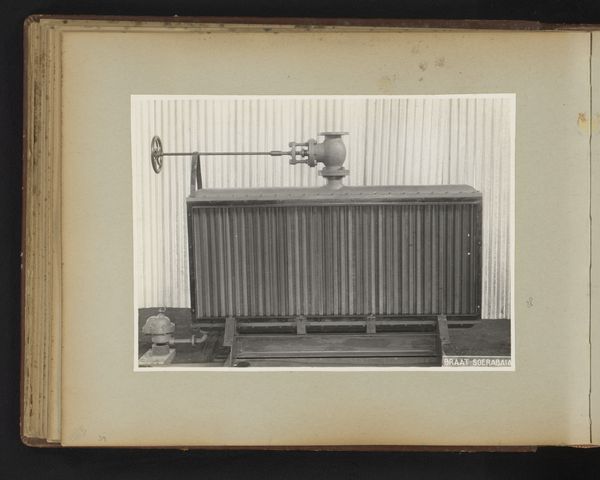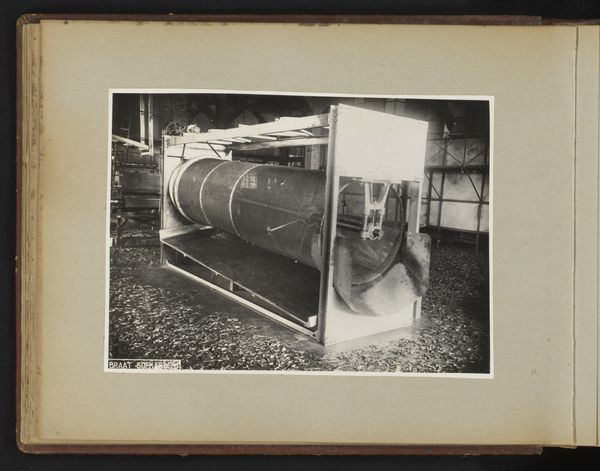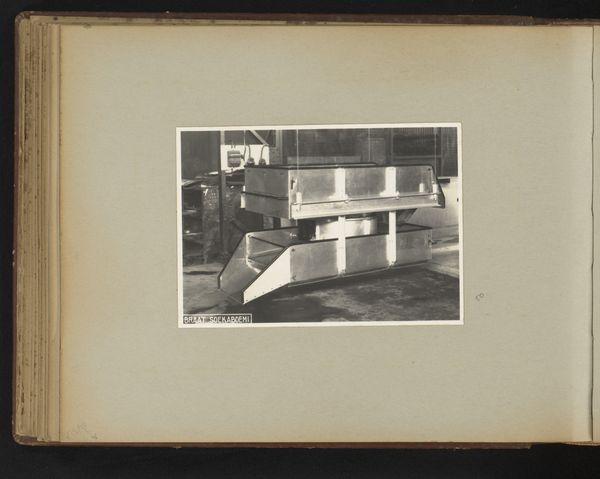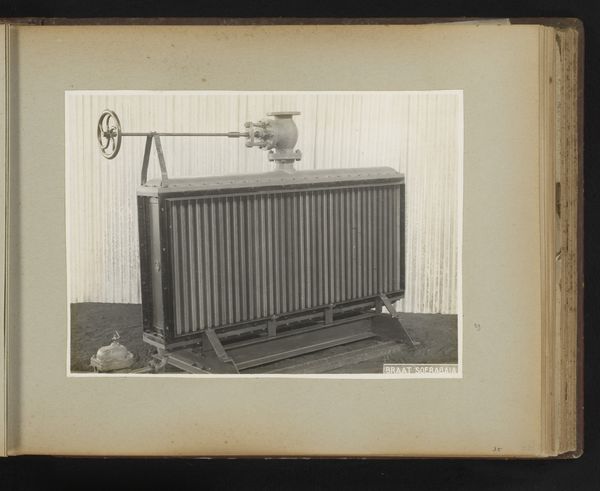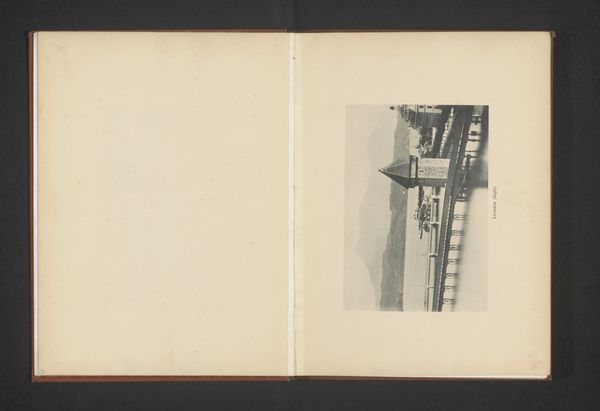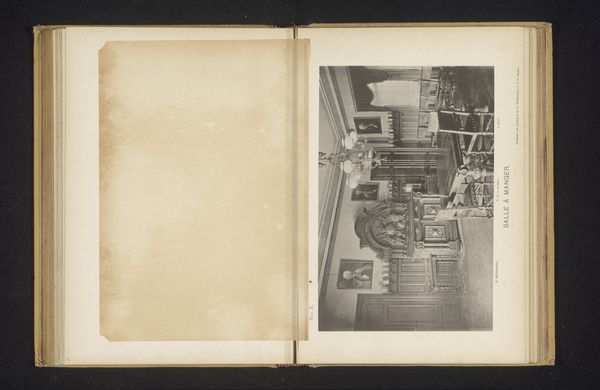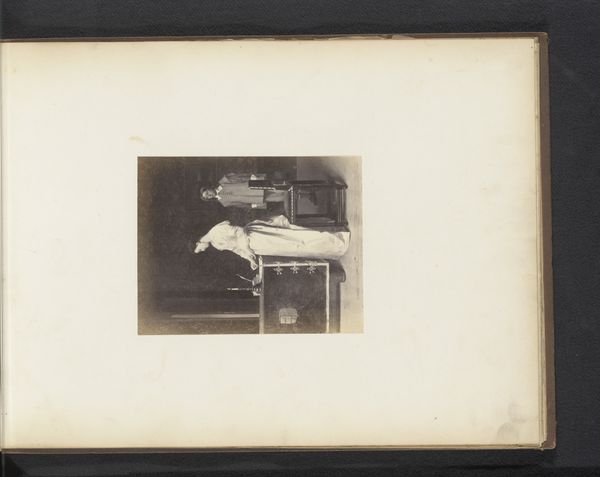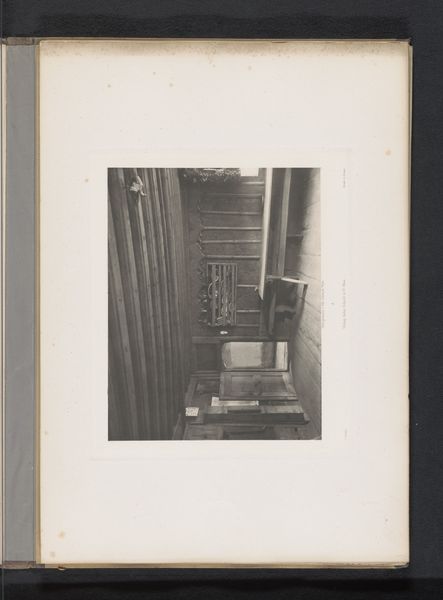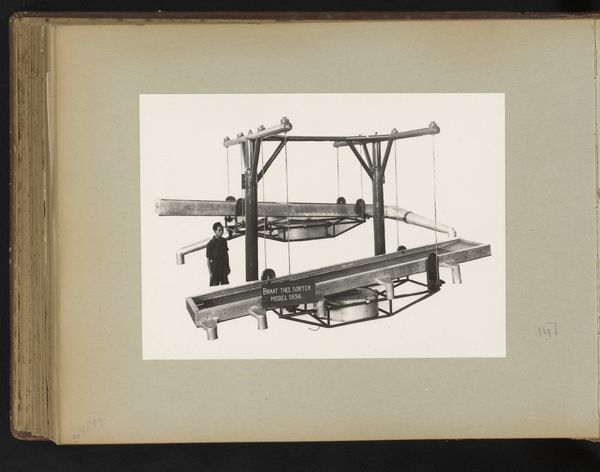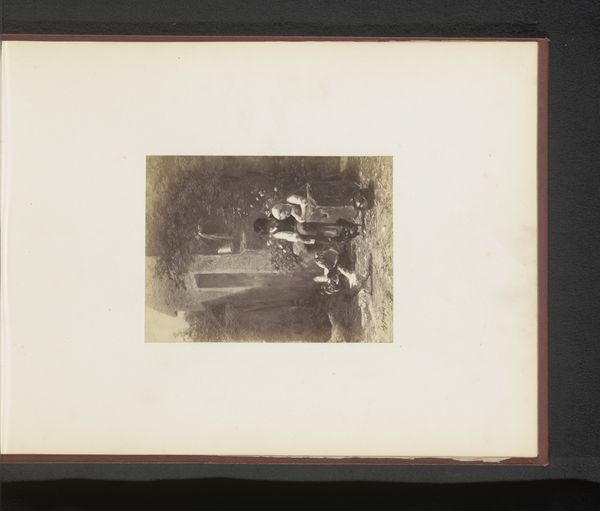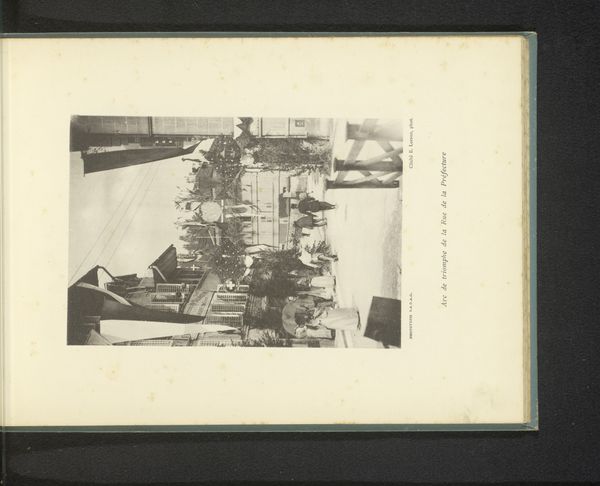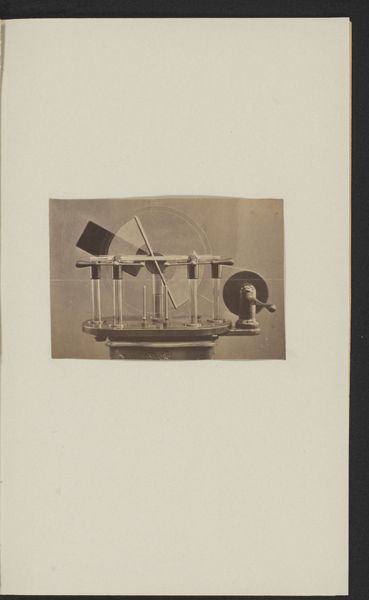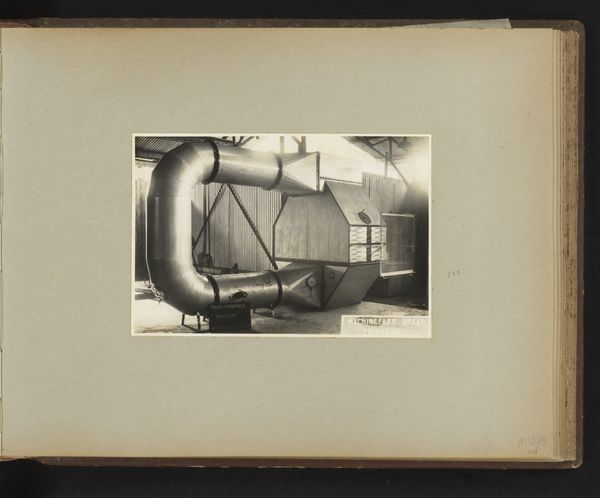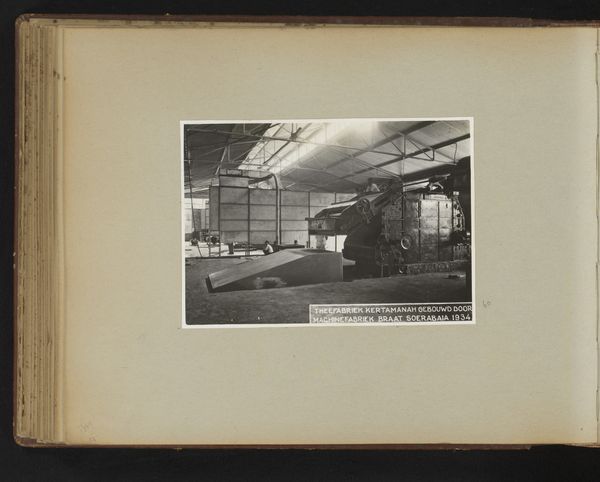
photography
#
photography
#
modernism
Dimensions: height 123 mm, width 162 mm, height 250 mm, width 320 mm
Copyright: Rijks Museum: Open Domain
Curator: Welcome. We’re looking at a modernist photograph titled "Machineonderdeel," taken sometime between 1931 and 1937. It’s part of the Rijksmuseum's collection. What are your first impressions? Editor: Stark. And oddly beautiful. There’s a formal quality to it. At first glance it’s impersonal, perhaps even cold, but I can't help but find the geometrical arrangement of its elements arresting. Curator: Absolutely. The composition relies heavily on geometric form and texture, doesn't it? The interplay of the vertical corrugated panels with the cylindrical valve creates a visually arresting tension. Notice the high contrast between light and shadow and how that enhances its austere aesthetic. It almost feels like an exercise in pure form. Editor: But doesn't this "exercise" highlight the growing presence of industry and mechanization in Dutch society during the interwar period? What does it mean to isolate a single machine part, and imbue it with such visual weight? We can examine how the photograph acts as both documentation of progress and perhaps even a silent commentary on the changing labor conditions as technology infiltrated everyday life. Curator: I agree. The very act of isolating a single component draws attention to its inherent design. This approach allows us to appreciate its form without the distraction of function. Think of how the shadows sculpt the cylindrical valve, emphasizing its three-dimensional presence in a rather clever application of tone and form. Editor: True. The focus on form also serves to abstract the labor involved. This approach feels quite distant from those who actually maintained and worked with this machine. We have to think about this period’s socioeconomic landscape, including widespread economic hardship, class division, and the political turmoil that preceded the Second World War. This photo may be of a beautifully rendered "part," but whose reality is represented by this selective, artistic portrayal? Curator: I think there is a conscious dialogue around aesthetics and functionality at work here. Perhaps even exploring the complex relationship between utility and design... Food for thought indeed. Editor: Yes, there's certainly an echo of modernity's fascination, or perhaps anxiety, surrounding the mechanization of labor here. Regardless, there's plenty more to uncover.
Comments
No comments
Be the first to comment and join the conversation on the ultimate creative platform.
